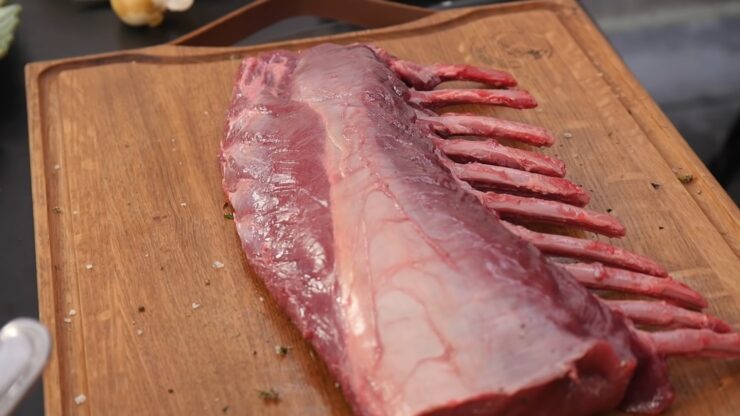Deer meat, also known as venison, is a popular choice for hunters and game enthusiasts alike. It’s not only a sustainable source of protein but also a delicious alternative to traditional meats like beef and pork. Proper handling and storage are crucial to maintaining the quality and safety of this meat, especially as you prepare it for processing. In this comprehensive guide, we’ll discuss how long deer meat can stay in the fridge before processing and share essential tips to ensure that your venison remains fresh, safe, and delicious.
Deer Meat and Its Benefits
Venison is known for its lean, tender texture and rich, gamey flavor. It’s also a highly nutritious option, containing lower levels of saturated fats, cholesterol, and calories compared to many other types of meat.
Additionally, deer meat is an excellent source of essential nutrients like iron, zinc, and B vitamins, which support a healthy diet. With its unique taste and numerous health benefits, it’s no wonder that it is a sought-after choice for many home cooks and professional chefs.
How to Store Deer Meat Before Processing
When it comes to storing deer meat, proper care is crucial to prevent spoilage and ensure the best possible flavor. Here are some steps to take when storing it before processing:
Field dressing
As soon as the deer have been harvested, field dressing should be performed to remove the internal organs and prevent bacteria from growing. This process will also help cool down the meat quickly.
Cooling
Once field dressed, the carcass should be hung in a shaded area with good airflow, allowing the meat to cool down to about 40°F (4°C) as soon as possible. This will minimize bacterial growth and preserve the meat’s quality.
Refrigeration
After cooling, transfer the meat to a refrigerator or cooler with ice packs. If you don’t have access to a refrigerator, consider quartering the deer and placing the meat in a cooler with ice or ice packs, ensuring that the temperature stays at or below 40°F (4°C).
The Importance of Temperature in Preserving It

Temperature plays a critical role in preserving deer meat and preventing the growth of harmful bacteria. The ideal temperature range for storing it is between 32°F (0°C) and 40°F (4°C). Storing meat at temperatures above 40°F (4°C) increases the risk of bacterial growth, which can lead to spoilage and foodborne illnesses.
It’s essential to use a refrigerator thermometer to monitor the temperature of your fridge and adjust the settings accordingly. Keeping a consistent temperature will help maintain the quality and safety of your meat before processing.
The Shelf Life: How Long is Too Long?
When stored at the proper temperature, deer meat can be kept in the fridge for up to five days before processing. However, it’s essential to note that this timeframe can vary depending on factors like the freshness of the meat, how quickly it was cooled after harvesting and the cleanliness of the storage environment.
If you plan on storing it for an extended period, it’s advisable to freeze it. Frozen deer meat can last up to a year if stored at a consistent temperature of 0°F (-18°C) or lower. Keep in mind that while freezing the meat will extend its shelf life, the quality may decline over time, particularly if the meat is not vacuum-sealed or tightly wrapped to prevent freezer burn.
Indicators of Spoilage
Knowing how to identify spoilage in deer meat is essential for ensuring food safety. Here are some common signs that your venison may have spoiled:
- Off smell: A strong, unpleasant odor is often the first indicator of spoilage. Fresh deer meat should have a mild, gamey scent.
- Slimy texture: Spoiled meat may feel slimy or sticky to the touch due to bacterial growth on the surface.
- Discoloration: While some color change is normal as meat oxidizes, a green or brown hue with an accompanying off smell may indicate spoilage.
- Mold: Visible mold growth on the meat is a clear sign of spoilage and should not be consumed.
If you notice any of these signs, it’s best to err on the side of caution and discard the spoiled meat to avoid potential health risks.
Tips for Extending the Shelf Life of Deer Meat
To maximize the freshness and safety of your deer meat, consider these tips:
1. Handle with care
Minimize the time the meat spends at room temperature, and always wash your hands and utensils when handling raw meat.
2. Dry aging
Allowing the deer meat to age for a few days in a controlled environment can enhance its flavor and tenderness. To dry age, place the meat on a rack in a refrigerator set at 34-37°F (1-3°C) with good airflow. Aging can last from three to seven days, depending on your preference. Note that dry aging may not be suitable for all cuts of meat and should be researched further before attempting.
3. Proper packaging
Wrap the meat in plastic wrap or butcher paper, ensuring that there are no air pockets. For freezing, vacuum-sealing is ideal to prevent freezer burn and maintain quality.
4. Quick freezing
When freezing deer meat, it’s essential to do so quickly to minimize ice crystal formation and preserve the meat’s texture. Place the meat in the coldest part of the freezer and avoid overloading the freezer with other items that could slow down the freezing process.
Frequently Asked Questions

1. Can venison be refrozen after thawing?
It’s generally safe to refreeze deer meat that has been thawed in the refrigerator as long as it was not left at room temperature for an extended period. However, refreezing may affect the texture and quality of the meat.
2. Can deer meat be processed after the five-day window?
It’s not recommended to process deer meat after five days in the fridge, as the risk of bacterial growth and spoilage increases. If you cannot process the meat within that timeframe, consider freezing it for later use.
3. How should I thaw frozen venison?
Thaw frozen deer meat in the refrigerator, allowing for 24 hours of thawing time for every 5 pounds (2.3 kg) of meat. Avoid thawing at room temperature, as this can lead to uneven thawing and create an environment conducive to bacterial growth.
4. Is it safe to eat deer meat with freezer burn?
While freezer burn is not harmful, it can affect the taste and texture of the meat. Trim away any freezer-burned areas before cooking to improve the overall quality of the dish.
Final Words
Proper storage and handling of deer meat are crucial to preserving its quality and safety. By understanding the importance of temperature, knowing the shelf life, and learning to identify signs of spoilage, you can ensure that your venison remains fresh, safe, and delicious.
Always practice good hygiene when handling raw meat and process or freeze deer meat within the recommended timeframes to reduce the risk of foodborne illnesses. With these tips in mind, you can enjoy the unique flavor and health benefits that deer meat has to offer.

